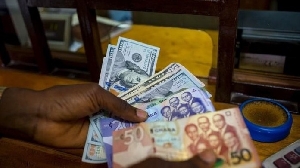Folks, let’s set aside the legality of the issue and do this simple math:
1. You borrow USD 250 million from the international market at a coupon (interest rate) of 10.75% per annum implying annual interest payments of USD 27 million in simple terms. Total due at the end of the year is USD 277 million. As an aside, the total interest payment on the USD 1 billion Eurobond the government sold last October amounts to over USD 1.6 billion in 15 years.
2. By law, the Ghana Infrastructural Fund (GIIF) money is ring fenced and held at the Bank of Ghana. However, the government tries to be clever by circumventing the fiscal rule that prevents them from buying their own government bonds by using a third party conduit, a private commercial bank. The Minister of Finance knowing he could not just take money as he was cash-strapped developed a simple plan: issue a directive to the Central Bank to wire the money to UBA, the private commercial bank. Government then turns around and borrows the money back through the Treasury bill route of domestic financing. In essence, Seth Tekper, the Finance Minister has managed to lay his hands on money the law prevented him from touching through a backdoor channel.
3. Per the law, the transfer of the USD 250 million to UBA needs to be converted to cedis. UBA would have received GHS 950 million overnight via wire transfer assuming an interbank exchange of $1: GHS3.8. The bank’s liquidity has been boosted overnight without even thinking about the broader macroeconomic effect of this on broad money supply and inflation expectations.
4. UBA then decides to buy GHS 950 million of government Treasury bills at a rate of about 24% (using the 1-year note); the bank would have made a hefty GHS 233 (USD 61) million profit in nominal terms just by loaning this same money to the government. The real profit accounting for an 18% year-on-year inflation would be at a 6.6% return generating GHS 63 (USD16.5 million). This begs the question of how much interest UBA is paying on this government deposit. Why is this important? Because in order to keep the total value of the original amount at USD 277 million or its cedi equivalent (i.e. USD 250 million principal + USD 27 million interest), UBA will in essence have to pay the government of Ghana a minimum interest I show in the next step below.
5. For this deal to make any financial sense, the government’s trade-off return between lending the money to UBA and then borrowing the same amount back through the T-Bill backdoor needs to be greater or equal to 34.75% in nominal terms. Computationally, this is the 24% T-Bill interest plus the 10.75% coupon (interest rate) on the USD 250 million from part of the Eurobond proceeds minus the interest earned on the deposit at UBA. It is even more dire for the government in real terms when one takes into account an 18% inflation ----- the government loses money on this deal either way. Bank of Ghana could have invested the monies externally as they do in safe deposits/investments to earn a real positive return if the infrastructure fund is not operational as yet!
6. UBA offering anything less than 34.75% (and I know this is unlikely) implies the government cannot cover the double interest payments on the principal amount plus the T-Bill interest without a top up. The government is even further exposed should exchange rates depreciate as we’ve seen in recent times as it will need more cedis to get the equivalent dollar amount of the principal transferred back to the Bank of Ghana.
7. So, who is the winner in all of this? UBA of course! The loser? Well I will leave that for you to figure it out. By the way, can anybody remind me of the definition of causing financial loss to the state?
Opinions of Thursday, 12 May 2016
Columnist: Theo Acheampong














